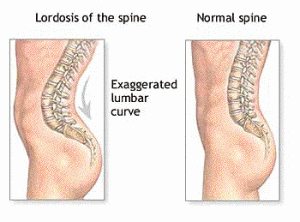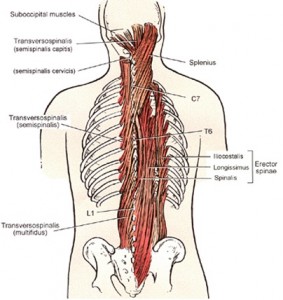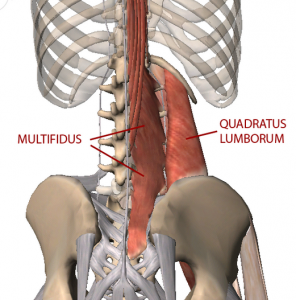Poor Posture and Tight Lower Back Muscles
Tight lower back muscles are a main reason that most people have poor posture.
But I know from saying this in so many of my privates and in my yoga classes that people think I am a little loose in the head.
Rounded shoulders would be the most likely attribute assigned to an image of poor posture if I had to guess.
While there are a good number of people who are round-shouldered—though not nearly as many as you might think—this appearance of being round-shouldered is often the direct result of having tight lower back muscles.
Tight lower back muscles call pull the upper back backward forcing the shoulder and upper chest to round forward in compensation.
If we don’t have good balanced posture it is likely because all of our curves are overly curved.
Tight lower back muscles often create an excessive arch in the lower spine which is unfortunately balanced by too great a curve in the upper spine.
Add to that the oft-repeated instruction to tuck the pelvis in an attempt to serve the lower back and everything can go haywire.
We are all too long in the front of the body and too short in the back of the body.
To improve our posture and relieve lower back pain we need to reverse this trend.
But the most common correction that is usually made when people try to fix their posture is to lift the chest up and thrust the arms back. There are many reasons why this happens but none of them are good.
The Tight Lower Back Muscles
The muscles of the lower back that I am talking about are the quadratus lumborum and its next-door neighbor the psoas; the multifidus, muscles of the lower spine that when working together on both sides should extend the spine; and the erector spinea, a series of muscles that also extend of the spine.
If these lower back muscles are tight they will not be able to function as designed.
All the exercise in the world won’t help these muscles if bad posture in both standing and sitting, keeps them short and tight.
We stand and sit way more than we exercise and we tend to mirror out posture with the way we exercise more often than we change it.
I teach people to walk, stand and sit in a new way to bring permanent change to these tight lower back muscles but the change must begin with the acknowledgment that they are a problem.
But this concept doesn’t seem to be on most people’s radar as any instruction to stand up straight or improve one’s posture is most often met with the aforementioned lifting of the rib cage, throwing the arms back, and increasing the tightness of these lower back muscles.
What a conundrum.
***




